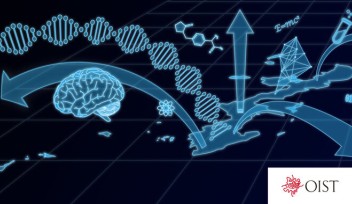Improving Nerve and Spinal Cord Repair

Nerve and spinal cord injuries are devastating, leaving over 22 million people globally with paralysis or severe disabilities. Despite medical advances, neurons have a very limited ability to regenerate after injury, and there is currently no effective treatment that can fully restore damaged neural tissue. Existing methods, such as 3D-lithography and electrospinning, have shown some promise in producing artificial scaffolds for tissue repair, but they come with significant limitations. These techniques are either too slow, too costly, or fail to create the customized, 3D structures needed for effective neural repair, leading to poor clinical outcomes.
To address this, researchers at the Neural Circuit Unit at OIST, with Lokesh Agrawal leading the project, have developed a novel solution that could revolutionize neural tissue regeneration. The team has created a unique hybrid fabrication technology that combines the precision of 3D-bioprinting with the speed and efficiency of electrospinning. This approach enables the rapid production of personalized, 3D-fibrous scaffolds that can be precisely tailored to fit the patient’s injury site. These scaffolds, made from a new biomaterial developed in the lab, provide the ideal structure for neural grafts based on stem cells, supporting nerve regeneration in ways that conventional scaffolds cannot.
This cutting-edge technology is a game-changer in the field of regenerative medicine, offering a faster, more affordable, and customizable solution for treating spinal cord and nerve injuries. The team has already developed and tested a prototype and is working on refining the system for even greater precision. Supported by OIST’s Proof of Concept Program, the team aims to commercialize this technology through a new startup, "SND Regenic," and bring it to the millions of patients in need.
With further development and investment, this breakthrough could be a major step toward restoring mobility and improving the quality of life for countless individuals.












